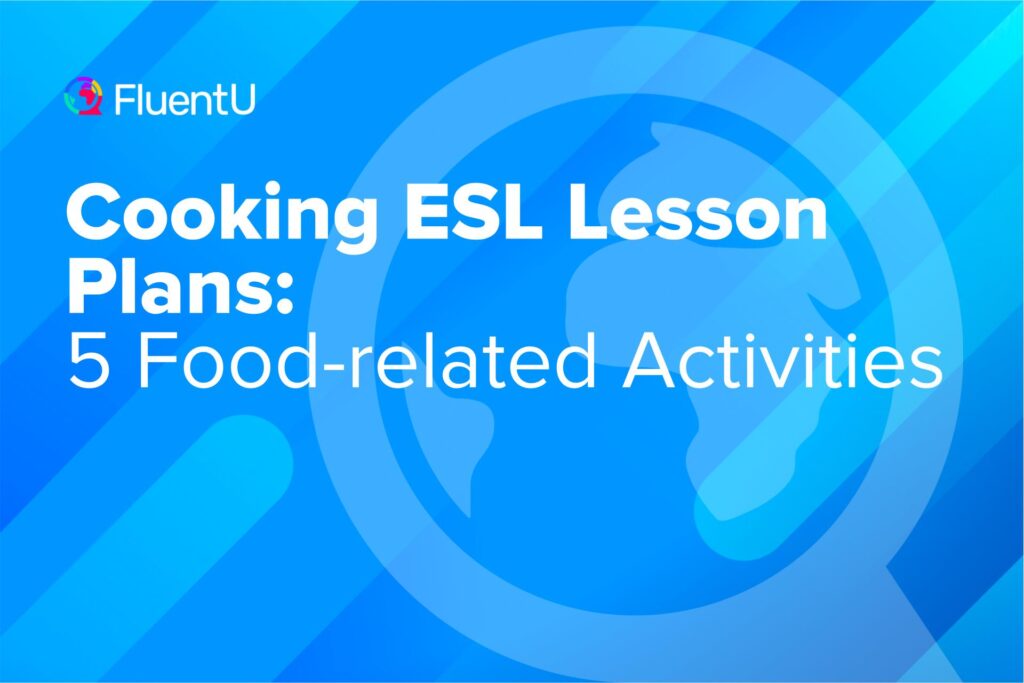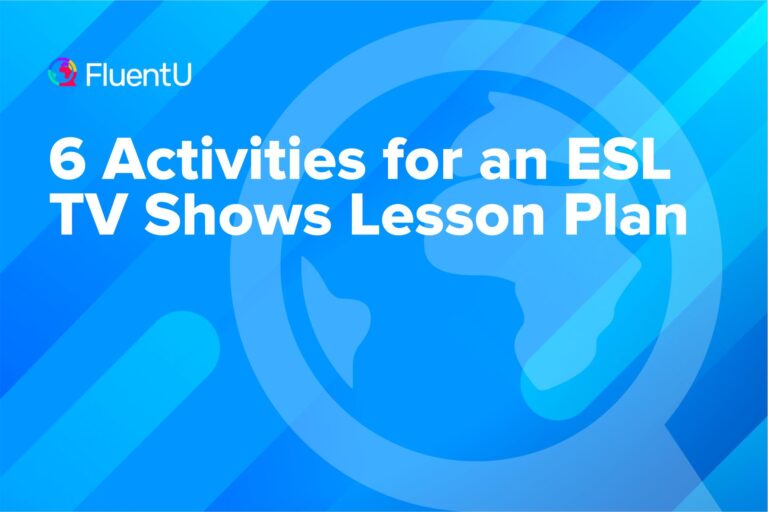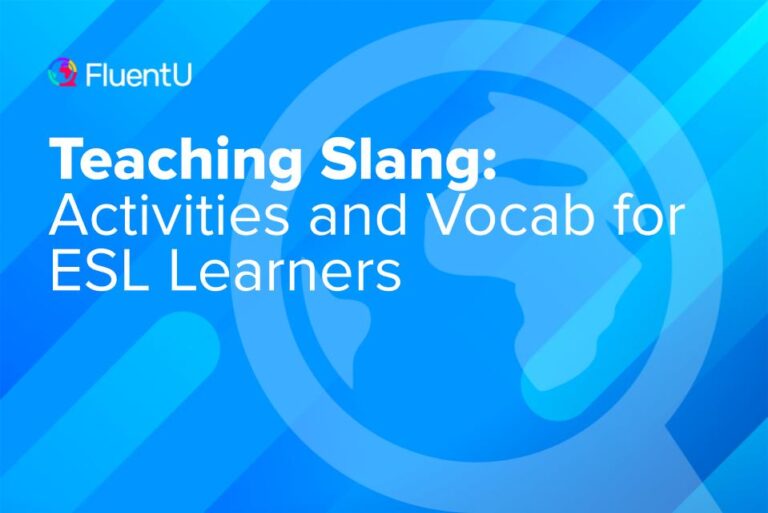Cooking ESL Lesson Plans: 5 Food-related Activities

Everyone likes talking about food, but how do you bring that into the classroom? If your ideas are only half-baked, you might need a little help.
With these fun activities, you’ll learn how to teach your students all the essential language they need to know for talking about cooking and preparing food. Plus, take a look at three example cooking ESL plans to help inspire your own lessons.
Download: This blog post is available as a convenient and portable PDF that you can take anywhere. Click here to get a copy. (Download)
1. Describing Food
This is a vocabulary-building exercise that introduces students to adjectives related to food and gives them a chance to use them.
To set the theme, ask your students to describe different foods. There are several ways you can do this, depending on the size and ability of your class. Here are some of them:
- Show flashcards with pictures of different types of food
- In groups or as a class, ask students to list one food for every letter of the alphabet
- Ask students to discuss their favorite foods in groups and why they like them
As students describe the food presented on the cards, they may already be able to use words like spicy, sweet and delicious. However, they’re likely to struggle to give you more than those basic descriptions, and this is an opportunity for you to fill the gaps in their vocabulary.
Provide a worksheet with lots of different words to describe food. You can easily whip this up with Microsoft Word. At the top of the sheet, list lots of different food-related words. Underneath that, leave empty boxes with headings like:
- Taste
- Texture
- Origin
- Preparation
Then, let students separate the words into the appropriate boxes. Have them guess first, providing clues if you need to. After they’re done, go through the correct answers with the class.
If you want some ready-made materials to help you with this lesson, you can use a resource like ISL Collective’s worksheet for describing food. It’s great for coming up with a list of less-common food descriptions.
Once the class has learned the meanings of these words, you can use the vocabulary covered to create a guessing game. Individual students can take turns to describe foods, while others try and guess what they’re talking about.
Finally, have your students use this vocabulary to write an elaborate, descriptive menu. For example, “smoked salmon salad” would become “Norwegian smoked salmon on a bed of fresh baby spinach”. Explain that students need to make their menus sound as appealing as possible. You can help them here by showing them some samples of menus. Most restaurants post their menus on their website, so simply search for a restaurant that you like on Google and download their menu.
2. Write Your Own Recipe
This activity is a great way to practice describing sequences and writing instructions. They’ll learn how to use words like: first, next, after that, until and later—all within the theme of cooking.
Start off by asking your students a simple question: “Do you know how to fry an egg?”
While everyone should know the answer, describing it in English might be a little difficult. Walk them through the recipe, asking for steps and writing the correct vocabulary and structure out on the board. This should include the ingredients, equipment and method that need to be used.
After everyone is comfortable with the concept, put your students into groups and have them come up with their own recipes. They can use the one already written on the board as a guide, and ask you for help with vocabulary along the way. Just make sure they choose something a little more complex than a fried egg!
If your students need a little more structure and guidance with this activity, you can use some worksheets for support. You don’t have to make them yourself, though. Here are some places where you can download ready-made worksheets:
- OneStopEnglish has a recipe writing worksheet where students can fill in the blanks and practice using sequence words correctly.
- LinguaHouse offers a worksheet on cooking, drinking and eating, which comes with an audio clip which can be used as an extra listening activity. However, you’ll have to create an account on the site to get access to it.
- BBC has a “Cooking Test” lesson plan, in which students have to create a recipe with a random selection of ingredients. This includes some strange ones for an extra challenge.
3. Foods of the World
This is a conversation activity that gives students the freedom to practice fluency when talking about food.
To kick things off, brainstorm different countries then have students write different foods and drinks from each one. Students can use this to discuss which ones they’ve tried, which ones they haven’t, and which ones they would like to try. This can include some “bizarre” foods, like fried ant eggs from Thailand, balut from the Philippines and black pudding from the UK.
If you need some inspiration, the British Council has a “World’s Weirdest Food” lesson plan for this purpose.
4. Cooking Competition
If you have the facilities to cook in the classroom, give your students hands-on cooking experience. This is a great way to get them active and engaged with something different. Simply provide the recipe and equipment, then put students into groups. At the end of the class, taste each group’s food, then give feedback and proclaim a winner.
Kids’ cooking recipes always work well for younger students. This lets you choose something easy, so you’re able to keep everything under control. Plus, you’ll have to spend more on your ingredients. And keep in mind, if you try something too complicated, you might not have enough time to finish cooking before the class finishes.
5. TV Chefs
Get your students to practice their presentation and public speaking skills in this cooking class! This activity is a great way to combine all of the vocabulary and grammar students have learned in the previous activities in a fun, practical activity. Plus, it’ll also get them working in teams.
TV Chefs works as an extension or a follow-up lesson after the cooking competition. Students can get to cooking again, but this time, they’ll have to create a video at the same time. Have them prepare a simple dish in groups. As they do so, they’ll have to record a video and describe what they’re doing, as if they were presenting a cooking show.
This will involve some preparation time. You’ll have to provide some ingredients, but if you’re comfortable, you can give them creative freedom with the recipe. You’ll also have to help them write the scripts to follow when they’re recording.
To do all of this, you can use the British Council lesson plan on TV chefs.
Example Cooking ESL Lesson Plans
If you want more inspiration for ESL activities related to cooking, check out these example lesson plans below:
- “How do you like it cooked?” — english4tutors: In this lesson, students will learn about the terms for different cooking methods, food idioms and linking words that can be used within recipes. They will also have a chance to practice their listening skills with a video exercise.
- “What are you cooking?” — ESL Speaking: This lesson will ensure your students can practice their writing, speaking, reading and listening skills. You can divide the class into smaller groups and allow them to plan a three-course meal, which they can then present to the class.
- “Authentic cooking experience” — EnglishClub: This lesson will give your students the chance to actually prepare some food items after working through the language used in the preparation instructions. This helps them retain the information they learn in the lesson by putting it into practice.
You can also look at cooking and food-related videos on platforms like YouTube and FluentU for more ideas on culinary-themed lessons.
FluentU takes authentic videos—like music videos, movie trailers, news and inspiring talks—and turns them into personalized language learning lessons.
You can try FluentU for free for 2 weeks. Check out the website or download the iOS app or Android app.
P.S. Click here to take advantage of our current sale! (Expires at the end of this month.)

ESL food activities are perfect for injecting some energy into the classroom. As well as learning some new sentence structures and vocabulary, students can use their imaginations and create something new. Most importantly, they can get out of their seats and move around the classroom.
In active classes, students are happier, more engaged, and more able to learn. Try implementing that principle into some of your other lessons, too.
Download: This blog post is available as a convenient and portable PDF that you can take anywhere. Click here to get a copy. (Download)
And One More Thing...
If you like learning English through movies and online media, you should also check out FluentU. FluentU lets you learn English from popular talk shows, catchy music videos and funny commercials, as you can see here:
The FluentU app and website makes it really easy to watch English videos. There are captions that are interactive. That means you can tap on any word to see an image, definition, and useful examples.
For example, when you tap on the word "searching," you see this:
Learn all the vocabulary in any video with quizzes. Swipe left or right to see more examples for the word you’re learning.

FluentU helps you learn fast with useful questions and multiple examples. Learn more.
The best part? FluentU remembers the vocabulary that you’re learning. It gives you extra practice with difficult words—and reminds you when it’s time to review what you’ve learned. You have a truly personalized experience.
Start using the FluentU website on your computer or tablet or, better yet, download the FluentU app from the iTunes or Google Play store. Click here to take advantage of our current sale! (Expires at the end of this month.)










